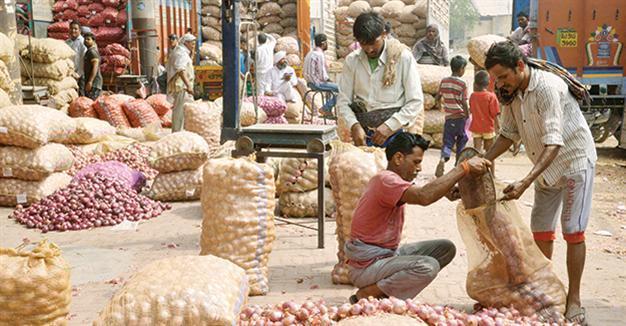World food prices post biggest rise for four years in June
ROME - Reuters
 World food prices posted their biggest monthly rise for four years in June, buoyed by a surge in sugar and increases for most other edible commodities, the United Nations food agency said on July 7.
World food prices posted their biggest monthly rise for four years in June, buoyed by a surge in sugar and increases for most other edible commodities, the United Nations food agency said on July 7. Food prices have been gaining ground since hitting a near seven-year low in January after four straight annual declines, and the United Nations Food and Agriculture Agency (FAO) now expects them to be stable for the next decade.
The 4.2 percent gain from May was the fifth increase in a row for the index, which measures monthly changes for a basket of cereals, oilseeds, dairy products, meat and sugar.
Food prices on international markets are now just 1 percent below the same month last year, the FAO said.
The FAO’s forecast for 10 years of stable prices, released on July 4, reinforced the view that agricultural commodities are emerging from an era of intense volatility unleashed by price spikes and supply tensions in 2007-2008.
Sugar prices rose 14.8 percent in June as heavy rains hampered sugar harvesting and affected yields in the world’s largest producer, Brazil, the FAO said.
Wet weather also reduced the amount of sugar that could be recovered from each ton of cane, prompting producers to divert more sugarcane to ethanol production, boosting prices further.
Vegetable oil prices defied the upward trend to slip 0.8 percent, led by palm oil, which saw subdued global import demand and a seasonal recovery in production in Indonesia and Malaysia.
The FAO raised its forecast for world cereal production in the 2016-17 season to 2.544 billion tons, 15.3 million tons higher than last year but still below 2014’s record harvest.
The upgrade is mainly based on improved prospects for wheat production, now forecast to hit 732 million tons due to better weather in the European Union, Russia and the United States.
Wheat utilization is also set to rise, the FAO said, as demand grows for its use in animal feed in the EU, Indonesia and the United States, but also for food consumption and industrial usage.
This higher consumption means global stocks by the end of the season in 2017 will be 1.5 percent below the opening level.
The agency said it needed $730 million over the next 12 months for relief in seven southern African countries hit hard by a blistering drought and faced a $610 million shortfall.
The World Food Programme (WFP) said in a statement the seven countries were Malawi, Zimbabwe, Mozambique, Lesotho, Madagascar, Swaziland and Zambia.
In Malawi, WFP said it needed $288 million but had only sourced $43 million, while in Zimbabwe - where drought has exacerbated an economic meltdown which has led to unrest - $228 million was required but only a tenth of that has been raised.
An El Nino weather pattern, which ended in May, triggered drought conditions across the region which hit the staple maize and other crops and dented economic growth.
















